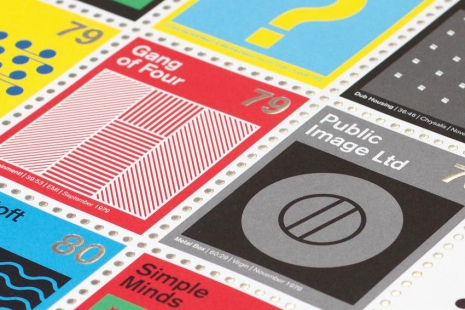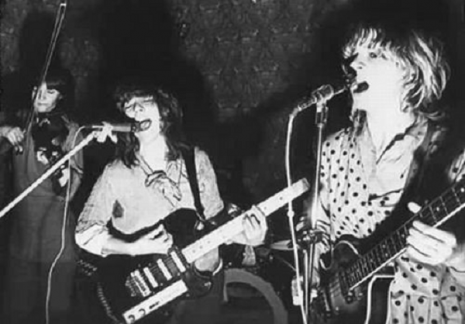
In a certain way, there’s nothing less “rock ‘n roll” than the Swiss poster design of the mid-twentieth century. The International Typographic Style and its design analogue, while frequently alluring, are stiff and unspontaneous, rife with right angles, straight lines, spare layouts, and immaculately kerned letters. They appeal to the part of the mind that cries out for order.
Both the post-punk and post-rock movements took a step or two away from the overtly rage-derived music of the Sex Pistols or X-Ray Spex, finding solace in “cooler” and oftentimes more robotic music that cloaked its emotionalism in tempered musical styles. This isn’t to say that there’s no emotion in Joy Division, Radiohead, Gang of Four, or Tortoise, merely that those groups and their ilk are more interested in seeking out the boundaries of form rather than letting their “wet,” subjective feelings take center stage.
In her book Exploring Typography, Tova Rabinowitz has this to say about the Swiss font-heads of decades past:
Around 1945, two former Bauhaus students, Théo Ballmer and Max Bill of Switzerland, recognized that increasing globalization with creating a need for a visual language that would be suitable for international communication. The style they developed—which was based on a clear arrangement of elements, photography, abstract designs, and sans-serif typefaces—came to be called the International Typographic Style (also called Swiss International Style). ... Any elements that might be confusing to an international audience were excluded. Unemotional layouts were composed that relied heavily on mathematical modular grids and a hierarchical organization of information. All elements were selected and sized to create direct and informative layouts. The calm objectivity of the International Typographic Style gained popularity, especially among corporate interests, and was dominant in America and Europe throughout the 1950s. International Typographic Style typefaces were sans serifs, based on geometric shapes. Helvetica, designed by Max Miedinger in 1952 ... became one of the most widely used typefaces in history. Univers, designed by Adrian Frutiger in 1957, gained immense popularity because of its extensive range of type styles.
For such reasons one might argue that Swiss modernism and post-punk/post-rock are natural partners. Not long ago the good people of Bleep.com unveiled two breathtaking posters celebrating the landmarks of post-punk and post-rock. For each genre “Dorothy” generated an incredible poster of 42 postage stamps, each celebrating a different album. Both posters are 4 colour print with silver foil and measure 80x60 centimeters. The post-punk poster features seminal albums such as Throbbing Gristle’s 20 Jazz Funk Greats, The Teardrop Explodes’ Kilimanjaro, The Cure’s Pornography, and The Jesus and Mary Chain’s Psychocandy. Meanwhile, the post-rock album celebrates Slint’s Spiderland, Stereolab’s Dots and Loops, Mogwai’s Young Team, Radiohead’s Kid A, and Tortoise’s Millions Now Living Will Never Die. In every case the album is represented by a spare, “Swiss”-inspired visual motif and lists the name of the artist, the album title, the running time, the label, and the release date—thus proving that the International Typographic Style is an efficient method of transmitting information.
Both posters cost $45.50 but the post-punk one is temporarily out of stock; however they are “expected soon.”
Catch the posters after the jump…........








